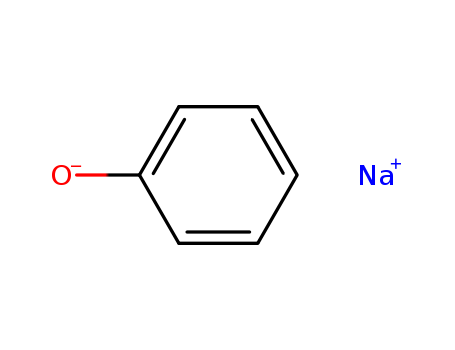10.1016/S0040-4039(00)76198-3
The research focuses on the synthesis and structural analysis of octakis(aryloxy)naphthalenes, a novel class of molecules with oxygen atoms attached to each available position of the aromatic binuclear skeleton. The purpose of the study was to prepare these compounds from octafluoronaphthalene using DMEU-promoted complete nucleophilic substitution, a method previously employed for benzene-based systems. The reactions were carried out at approximately 90°C over several weeks, yielding products with varying efficiencies ranging from 55-85%. The chemicals used in the process include octafluoronaphthalene, sodium phenoxide, and DMEU (dimethoxyethane) as the promoter. The conclusions drawn from the study include the successful synthesis of the parent compound with an 85% yield and the characterization of its properties, as well as the discovery of a unique empty-cage clathrate structure for octakis(m-tolylthio)naphthalene and the elucidation of the host-guest packing in the acetone inclusion compound of octakis(β-naphthyloxy)naphthalene.
10.1007/BF00899356
The study focuses on the synthesis of multiply substituted ethanes. The key chemicals involved include trichloroethylene, sodium phenolate, and phenol. Trichloroethylene reacts with sodium phenolate to form dichlorovinyl-phenyl ether (I), which then undergoes a complex sequence of reactions with phenol to produce tetra-(p-oxyphenyl)-ethane (IV). The study also explores the hydriding of dichlorovinyl-phenyl ether (I) using catalysts like palladium on carbon, platinum oxide, and Raney nickel, resulting in the formation of phenetol (III). Additionally, the study synthesizes derivatives of tetra-(p-oxyphenyl)-ethane (IV), such as tetra-(p-methoxyphenyl)-ethane (V), tetra-(p-ethoxyphenyl)-ethane (VI), tetra-(p-acetoxyphenyl)-ethane (VII), and tetra-(3-nitro-4-oxyphenyl)-ethane (VIII), through methylation, acetylation, and nitration processes. The study investigates the structure and properties of these compounds, including their potential estrogenic activity, which was tested but found to be inactive up to 100 gamma.
10.1080/10426500902930159
The research focuses on the interaction of bis(chloromethyl) isocyanatophosphinate with chiral α-aminoalkylphosphonates, leading to the stereoselective synthesis of 2,4-dioxo-5-phenyl-1-phenylethylamino-4-phenoxy-1,3,4-diazaphospholidine. The study involves the synthesis of O,O-diphenyl-(α-phenylethylamino)benzylphosphonate in both racemic and enantiopure forms, which then reacts with bis(chloromethyl)isocyanatophosphinate to form the target diazaphospholidine. Sodium phenolate was used as a catalyst in the synthesis of compound 6A (enantiopure form). Phenol was Involved in the cyclization step of the reaction to form the final diazaphospholidine product. The experiments utilized various analytical techniques, including IR spectroscopy, NMR spectroscopy (1H, 13C, and 31P), mass spectrometry, and X-ray single crystal diffraction to characterize the reactants and products. The research also explores the stereoselectivity of the reaction by using enantiopure aminophosphonates, aiming to produce enantiopure phosphorus-nitrogen containing heterocycles, which are of interest due to their potential applications in pharmaceuticals and agrochemicals.
10.1039/c39870001373
The study investigates a new method for preparing diphenyl ethers by displacing an aromatic nitro group with phenoxides. It involves using substituted nitrobenzenes (2a-d) and various phenoxides, including sodium phenoxide and 2,6-disubstituted phenoxides, in dry dimethyl sulphoxide at 90°C for 16 hours. The nitrobenzenes act as the substrates, while the phenoxides serve as nucleophiles to displace the nitro group, forming diphenyl ethers. The study highlights that this method is particularly effective for synthesizing hindered diphenyl ethers from weakly nucleophilic phenoxides. The results show that the yield of diphenyl ethers is affected by the reaction temperature and the specific phenoxide used. Additionally, the study provides insights into the reaction mechanism, suggesting a radical nature rather than an anionic nucleophilic displacement mechanism in certain cases.





